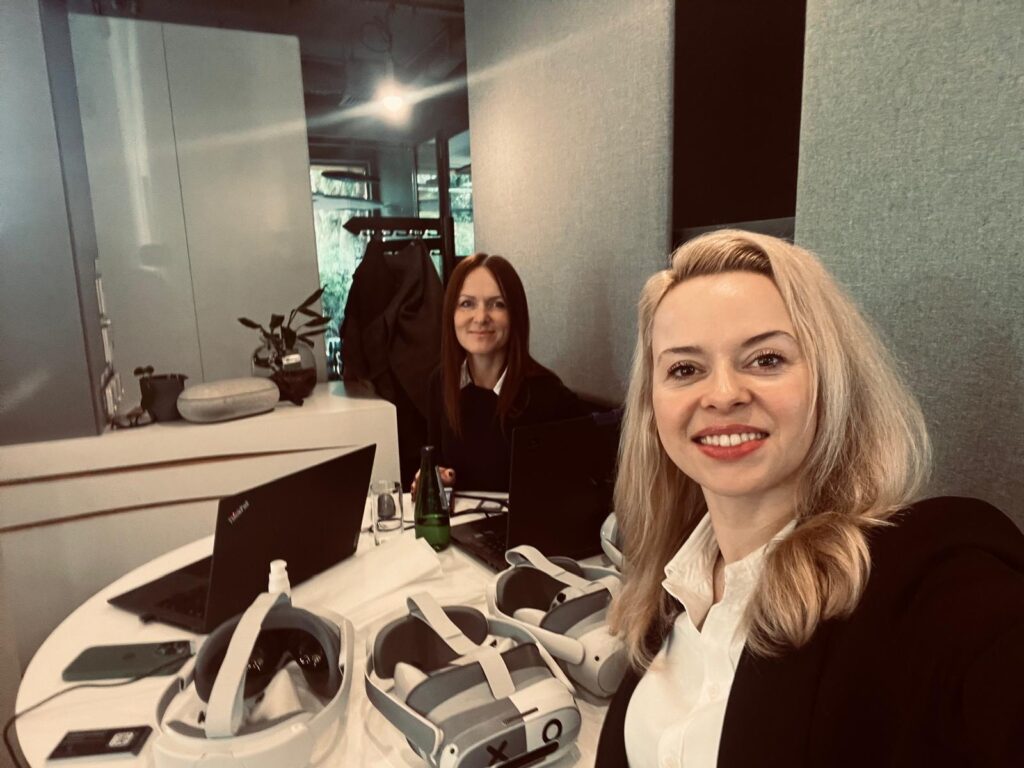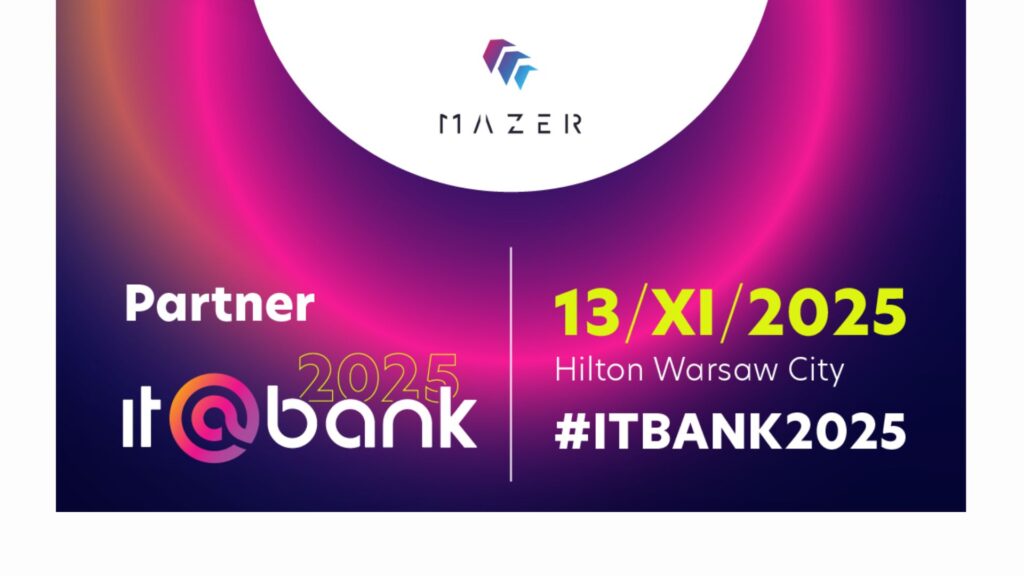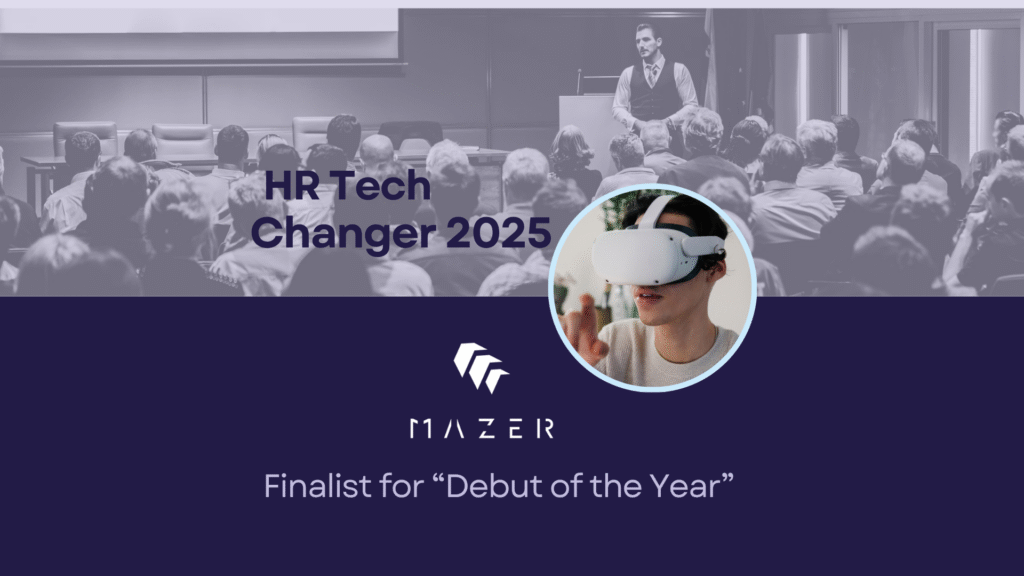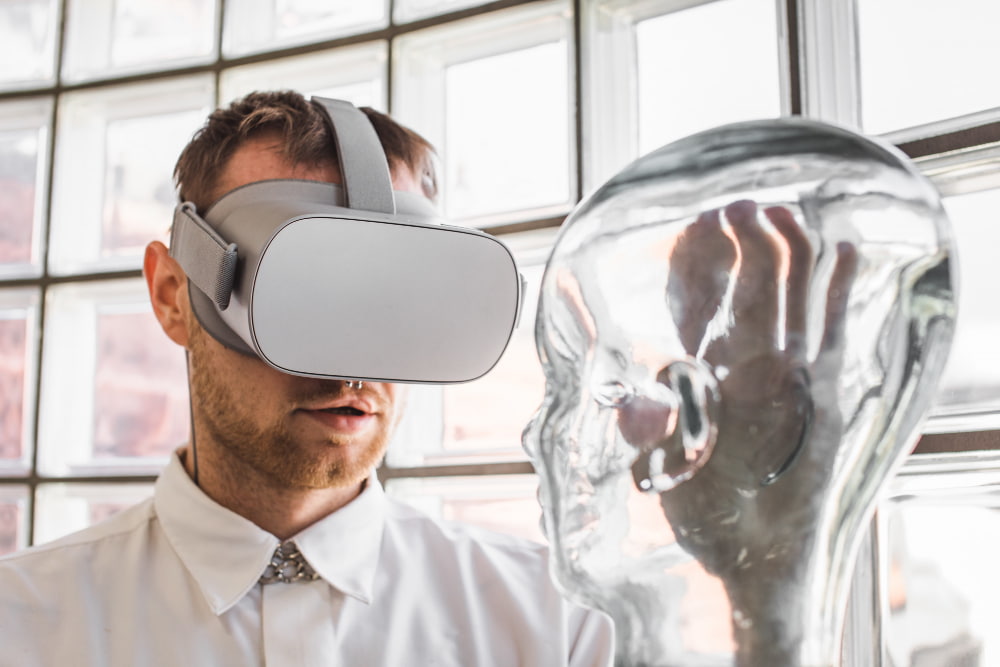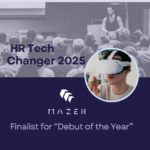Why Your Company Should Invest In VR For Training
Table of Contents:
Companies should continually innovate ways to train and upskill their employees, and this is more important than ever. If you’re considering new training methods, understanding why to invest in virtual reality (VR) training is crucial. VR offers immersive, engaging, and personalized learning experiences that can dramatically improve knowledge retention and employee performance, making it a wise investment for forward-thinking companies.
Key Takeaways:
- Boosts engagement and retention:
Immersive VR environments keep learners focused and help them retain knowledge more effectively than traditional methods. - Safe skill development:
Employees can practice complex or high-risk tasks in a risk-free environment, reducing errors and accidents on the job. - Long-term cost efficiency:
Faster onboarding, reduced mistakes, and improved productivity deliver a strong return on investment over time. - Personalized learning:
VR adapts training to each employee’s pace, strengths, and weaknesses, closing skill gaps more effectively. - Scalable and accessible:
VR training modules can be deployed across global, remote, or hybrid teams to ensure consistent learning outcomes. - Measurable outcomes:
Built-in analytics track progress, errors, and performance, enabling continuous improvement and accountability. - Future-proof strategy:
Companies adopting VR training today gain a competitive edge by preparing their workforce for tomorrow’s challenges.
Enhanced Engagement and Knowledge Retention
One of the top reasons to invest in VR training is the high level of engagement it offers. VR creates fully immersive environments where learners can interact with realistic simulations, practice hands-on skills, and experience scenarios that mirror real-life challenges. This level of immersion leads to higher attention and motivation compared to passive learning methods, such as videos or slide presentations.
Research indicates that immersive learning environments can significantly enhance knowledge retention. Employees who are actively involved in training are more likely to remember and apply key concepts than those who simply listen or watch. VR allows learners to learn by doing – a proven method for deeper understanding.
Risk-Free Skill Development
VR training offers a safe environment for practicing high-risk or complex tasks without incurring real-world consequences. Employees can build confidence and competence through repeated practice in a controlled virtual environment, operating heavy machinery, managing emergencies, or conducting delicate procedures.
This risk-free environment reduces the fear of making mistakes, allowing learners to experiment and improve their skills. This means fewer accidents, errors, and downtime for companies when employees transfer their skills to the workplace. There’s a reason F1 drivers practice in VR. VR training can speed up onboarding and enable employees to transition out of their roles more quickly, resulting in increased overall productivity. Companies that invest in VR training will see a significant return on investment (ROI) over time, leading to improved performance and reduced operational and logistical costs.
Personalized Learning Experiences
Another reason to invest in VR training is the ability to deliver personalized learning paths. VR programs can utilize data and AI to tailor their content to individual learners’ pace, strengths, and weaknesses. This means employees receive training tailored to their specific needs, rather than a one-size-fits-all approach.
Personalized VR training enhances learner satisfaction and effectiveness, as employees feel more supported and challenged. It also helps organizations address skill gaps more efficiently by focusing resources where needed most.
Scalability and Accessibility
VR training can scale across large or distributed workforces. Unlike traditional training sessions, which are limited by room size or instructor availability, VR modules can be accessed anytime, anywhere – whether employees are remote or in different offices.
This is ideal for companies with global operations or hybrid work models, ensuring all employees receive consistent and high-quality learning, regardless of their location.
Measurable Training Outcomes
One of the biggest benefits of VR training is the ability to track learner progress in real time. Advanced analytics in VR platforms provide insights into user performance, time spent on tasks, errors made, and skill mastery.
These measurable outcomes enable training managers to identify knowledge gaps, optimize course content, and effectively demonstrate the impact of training to stakeholders. This data-driven approach means continuous improvement and greater accountability in workforce development.
Future Proof Your Workforce Development Strategy
As technology evolves, companies investing in VR training are positioning themselves as innovators ready to adopt new tools. VR is becoming a standard in industries such as manufacturing, healthcare, aviation, and more, and early adopters will have stronger, more adaptable teams ready for tomorrow’s challenges.
Investing in VR training is more than just being trendy – it’s meaningful, long-term improvement in how your workforce learns and performs.
Contact us to enhance engagement, retention, and future-proof your training.
How does VR training improve engagement and knowledge retention?
VR creates immersive, interactive environments where employees learn by doing. This hands-on approach boosts attention, motivation, and retention compared to passive methods like slides or videos. Learners are more likely to remember and apply concepts after active participation.
What makes VR training a safe way to practice complex tasks?
Employees can practice high-risk or delicate tasks in a controlled VR environment without real-world consequences. This risk-free training reduces errors, accidents, and downtime, while building confidence and competence through repeated practice.
Is VR training cost-effective in the long term?
Yes. Although the initial investment may be higher, VR training speeds up onboarding, reduces mistakes, and improves productivity. Over time, it lowers operational costs and delivers a strong return on investment (ROI).
Can VR training be personalized for individual learners?
Absolutely. VR programs can adapt to each employee’s pace, strengths, and weaknesses. AI-driven features tailor content dynamically, ensuring more effective and targeted learning experiences.
How scalable and accessible is VR training?
VR training modules can be deployed to employees anywhere, anytime. This makes it ideal for global or hybrid teams, ensuring consistent learning quality across locations without logistical limitations.
How can companies measure the outcomes of VR training?
Advanced analytics track learner performance, task completion, errors, and progress. This data-driven approach highlights skill gaps, supports continuous improvement, and helps prove the impact of training to stakeholders.
How does VR training future-proof workforce development?
Investing in VR demonstrates innovation and readiness for evolving workplace demands. Industries such as healthcare, manufacturing, and aviation already use VR to stay ahead, making early adoption a competitive advantage.

Author: Rafał Siejca
Rafal has over twenty years of corporate experience, including roles at Millennium Bank, Comarch, and leading software teams at PZU, one of Europe’s largest insurance companies. As one of Poland’s few true VR experts with a decade of experience, he ensures timely, high-quality project delivery as CEO and CTO.


